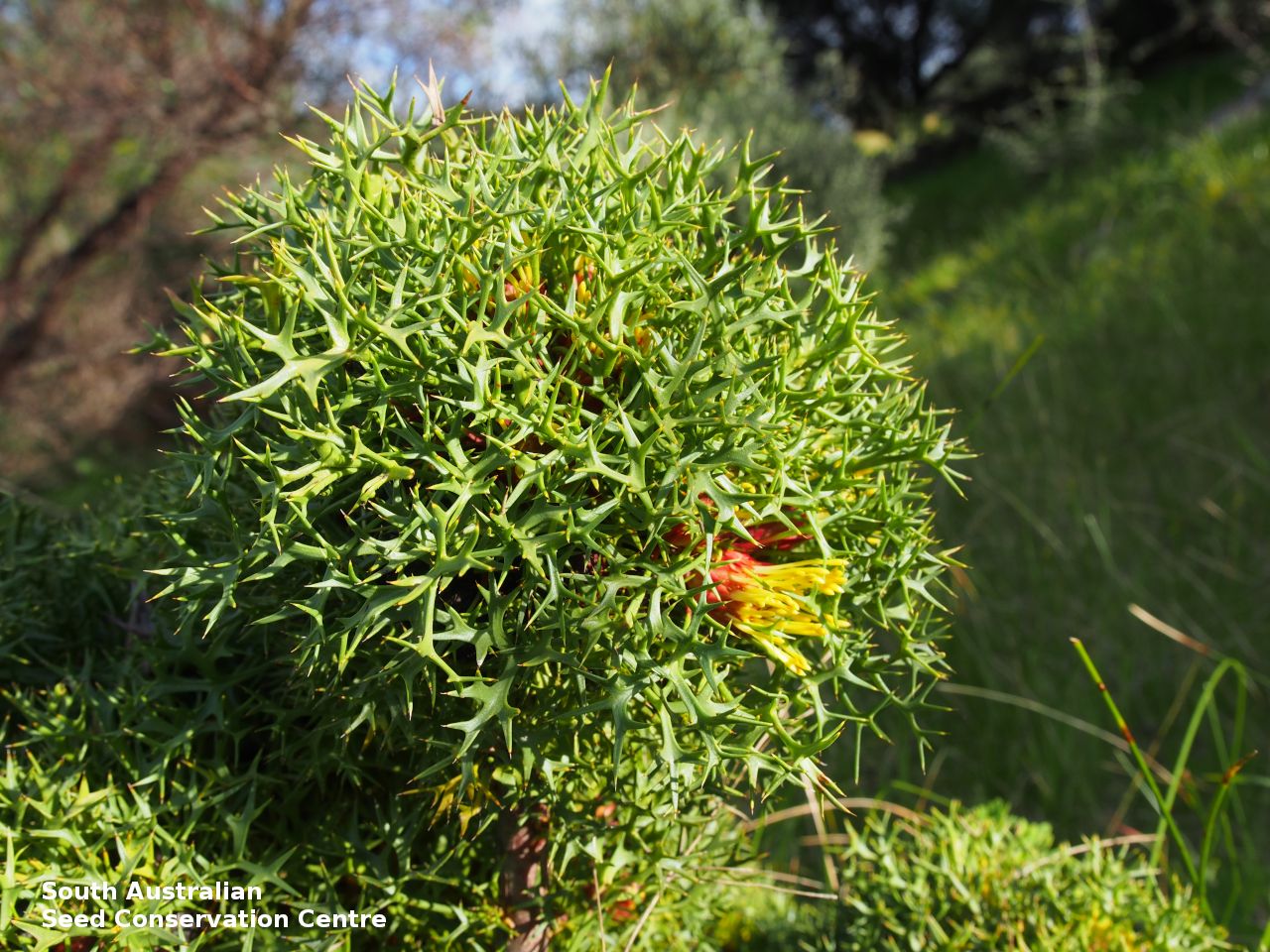
















Botanical art
Common names
Horny Cone-bush
Cone-bush
Etymology
Isopogon, from the Greek 'isos,' meaning equal and 'pogon', meaning beard, alluding to the tufts of hairs at the apex of the perianth segments. Ceratophylus, from the Greek 'keras', meaning horn and 'phyllum', meaning a leaf, referring to the stiff antler-like tips of the leaves.
Distribution and status
Found on Kangaroo Island, southern Mount Lofty Ranges and the South-east in South Australia growing on sand, rarely sandy clay, in sclerophyll shrubland, woodland and forest. Also found in Victoria and Tasmania. Native. Common in South Australia. Common in Victoria. Rare in Tasmania.
Herbarium regions: Northern Lofty, Murray, Southern Lofty, Kangaroo Island, South Eastern, Green Adelaide
AVH map: SA distribution map (external link)
Plant description
Small prickly shrub to 65 cm with a thick woody rootstock that forms dense, spiky tufts of leaves. Leaves are crowded, rigid, to 8 cm long, with stalks that are flattened and at least as long as the blade. The blades are arranged or divided into 2 or 3 narrow lobes ending in a pungent point. Inflorescence mostly terminal, consisting of dense globular cones of yellow flowers. Flowering between July and January. Fruits are greyish-brown cone to 2 cm diameter. Seeds are dark-brown nut to 4 mm long and 1.5 mm wide, covered in dense long creamy hairs. Seed embryo type is investing.
Seed collection and propagation
Collect seeds between January and December. Collect cones that are matured, turning brown, to ensure mature seed. Be careful when collecting the cones as the plant is very prickly. Wearing of gloves is recommended. Place the cones in a tray and leave to dry for 2 weeks. Then rub the dried heads with a rubber bung to dislodge the fruits. Use a sieve to separate any unwanted material. Seeds are enclosed in the hard fruit and can be stored as is. Store the fruit with a desiccant such as dried silica beads or dry rice, in an air tight container in a cool and dry place. From one collection, the seed viability was average, at 65%. Seeds are non-dormant, viable seed should germinate readily.
| Location | No. of seeds (weight grams) | Number of plants | Date collected | Collection number Collection location | Date stored | % Viability | Storage temperature |
|---|---|---|---|---|---|---|---|
| BGA MSB | 4,500 (29.5 g) 4,500 (29.5 g) | 20+ | 11-Apr-2006 | KHB61 Southern Lofty | 1-Aug-2007 | 65% | -18°C |
Number of plants: This is the number of plants from which the seeds were collected.
Collection location: The Herbarium of South Australia's region name.
% Viability: Percentage of filled healthy seeds determined by a cut test or x-ray.